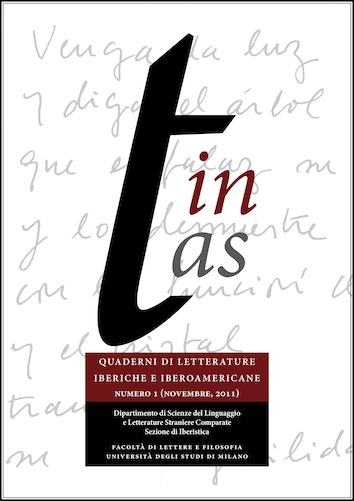La vida invisible ed El séptimo velo di Juan Manuel de Prada: quando echi e geometrie divengono formule
DOI:
https://doi.org/10.13130/2240-5437/1803Abstract
Il presente articolo vorrebbe mostrare, soffermandosi soprattutto sull’analisi dei romanzi La vida invisible (2003) e El séptimo velo (2007), come la traiettoria letteraria di Juan Manuel de Prada sia nel fondo frutto di una progressiva sedimentazione di tic stilistici, metafore, similitudini, immagini e personaggi che ricorrono sistematicamente nei suoi libri, finendo per dare vita a universi chiusi, retti su archetipi che, con la loro fissità, offuscano il brillante stile barocco dell’autore e mettono a nudo una certa serialità delle vicende narrate. The aim of this article is to show, through the analysis of the novels La vida invisible and El séptimo velo, how the whole literary work of Juan Manuel de Prada –one of the most acclaimed spanish writers born in the Seventies– is based on a progressive sedimentation of stylistic devices, metaphors, similes, images and characters. As a consequence, the literary worlds that he creates in his books are claustrophobic and rely on archetypes that, because of their shared traits, undermine the brilliance of his baroque style and reveal some repetitiveness in the elaboration of plots and situations.Dowloads
Pubblicato
2012-01-02
Fascicolo
Sezione
Articoli



